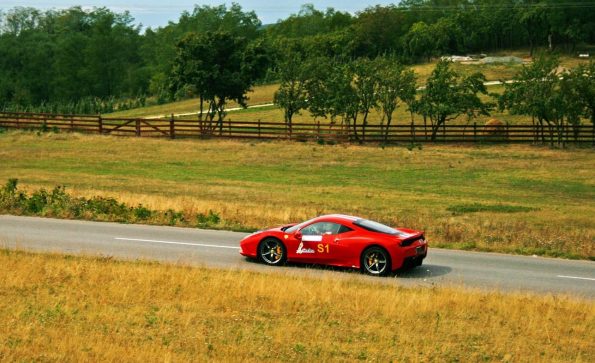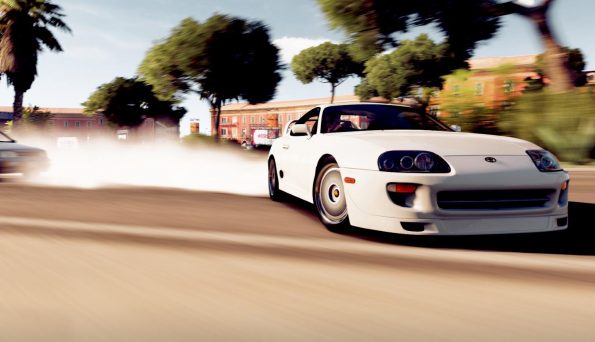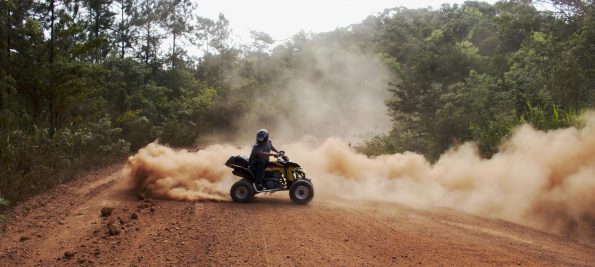Australia has dangerous driving laws and they are designed to set guidance around when driving is considered to present undue risks to the public or property. But what if a race car driver breaks the law but is still well within their driving limits. An example of this is drifters who break traction and speed and slide their car around corners or V8 Supercars drivers who are used to driving at over 250km/h who might occasionally want to do half that speed on a motorway.
There have been numerous incidents where F1 drivers have been caught speeding or ‘hooning’ and have been fined, for example Lewis Hamilton was caught doing a burnout in Melbourne; the penalty was insignificant. Racing drivers don’t necessarily get away scot-free but have also experienced favourable treatment in other countries. For example, in New Zealand in 2015, a former motorbike racer was clocked at 218km/h on the Napier-Taupo Rd and was fined NZ$500 plus NZ$130 court costs as well as disqualified for three months. The judge took into account the road conditions (straight), the lack of other traffic, the rider’s understanding of the risks and the rider’s immediate acknowledgement of guilt, as opposed to the other example given in the linked story of a driver travelling at a slower speed in a car in the same location who got a fine of NZ$1250 and 8 months’ disqualification.
All Australian states have legislation. The Road Safety Amendment Bill 2015 Part 2 – Hoon Driving was introduced on 23 June 2015 in Victoria and added more onerous repercussions for drivers who drive recklessly and dangerously, putting the public at risk. In Victoria, hoon driving offences are categorised into two ‘tiers’ in the Road Safety Act 1986. Both tiers are defined in Part 6A (‘Impoundment, immobilisation and forfeiture of motor vehicles’) of the Act.
Tier one offences

- speeding or dangerous driving at 70km/h or more over the limit or at 170km/h or more in a 110km/h zone;
- repeat drink driving with blood alcohol reading of 0.10 or higher;
- repeat driving under the influence of drugs;
- repeat unlicensed driving; and
- repeat driving while suspended or disqualified.
The vehicle can be impounded or immobilised for 90 days for the first offence or impounded and forfeited to the state in the case of a second offence.
Tier two offences

- speeding or dangerous driving at 45-69km/h or more over the limit or at 145-169km/h or more in a 110km/h zone;
- street racing and speed trials;
- ‘improper use’ of a vehicle by intentionally making one or more wheels lose traction (for example drifting, skids, burnouts, handbrake turns, donuts);
- not obeying a lawful direction to stop;
- driving while a passenger is not wearing a seatbelt; and
- driving a vehicle when passengers are sitting in an area not designed for passengers.

In New South Wales, the Road Transport Act 2013 No 18 part 5.2 covers speeding and dangerous driving. This includes races, attempts on speed records, speed trials, drag racing, etc. The section ‘Conduct associated with road and drag racing and other activities’ covers almost every conceivable scenario of hooning, including sustained loss of traction.
Just because a racing driver could drive at high speed on a road, doesn’t mean they are permitted to break the law. While the driver may have additional skills, there is a dramatic increase in risks to other road users and property:
- Aggressive driving such as burnouts and drifting damages the road surface
- Smoke caused by burnouts and driving reduces visibility for other drivers
- The surprise or shock at seeing another vehicle sliding or appearing to be out-of-control may cause other drivers to take unnecessary evasive action
- A road is not a controlled surface like a race track and it is harder to predict where the limit of traction will be, making it more dangerous when driving fast
- Drivers are required to stay in their lane unless overtaking
- Racing and other high performance driving by professionals on the road would encourage copycat actions by less-skilled drivers who would then cause more crashes.
